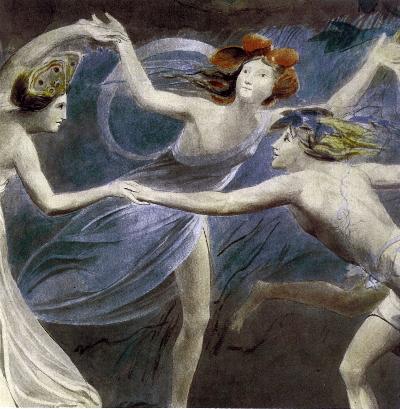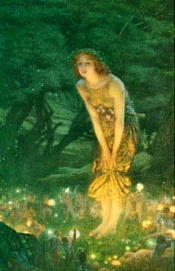|
Out of this wood do not desire to go:
Thou shalt remain here, whether thou wilt or no.
I am a spirit of no common rate;
The summer still doth tend upon my state;
And I do love thee: therefore, go with me;
I'll give thee fairies to attend on thee,
And they shall fetch thee jewels from the deep,
And sing while thou on pressed flowers dost sleep;
And I will purge thy mortal grossness so
That thou shalt like an airy spirit go.
--Titania, Queen of the faeries. Act 3, Scene I.
A Midsummer Night's Dream. William Shakespeare.
|
The cup fungi are ascomycetes that are grouped within the class Discomycetes, order Pezizales. These fungi produce fruiting structures called apothecia, bowl or cup shaped structures with open tops and a hymenial lining (rows of asci that contain the spores). The asci of the Pezizales are operculate; they have a hinged lid that opens to disperse the spores. Most of the Pezizales are saprophytic, and can be found growing in soil, leaf litter, or on decaying wood.
There are several species of cup fungi from which faeries might sip. Let's look at a few of them.

 Tom Volk's Fungus of the Month for June 2005
Tom Volk's Fungus of the Month for June 2005